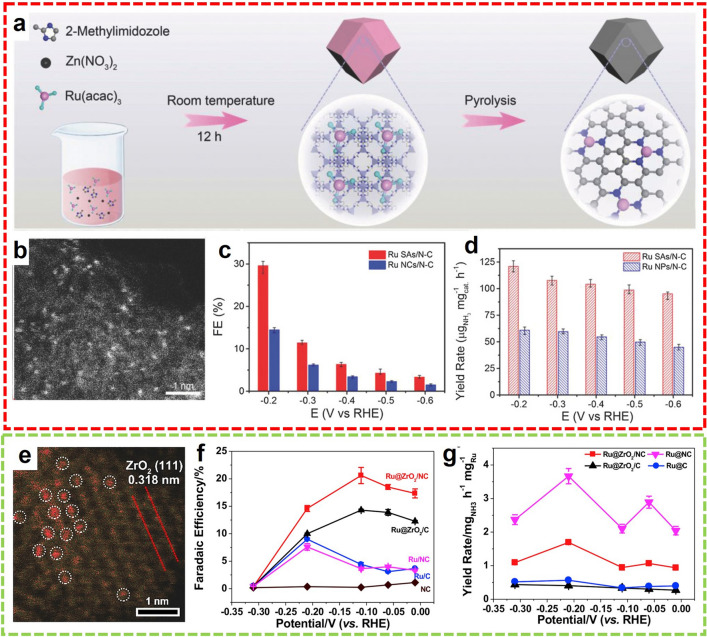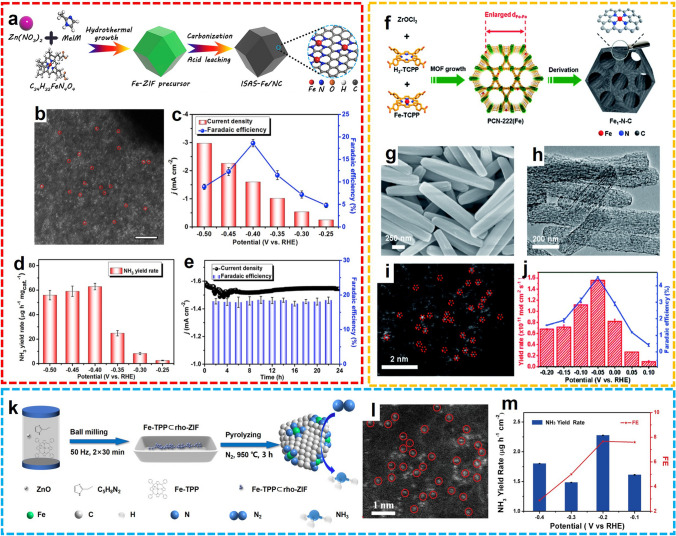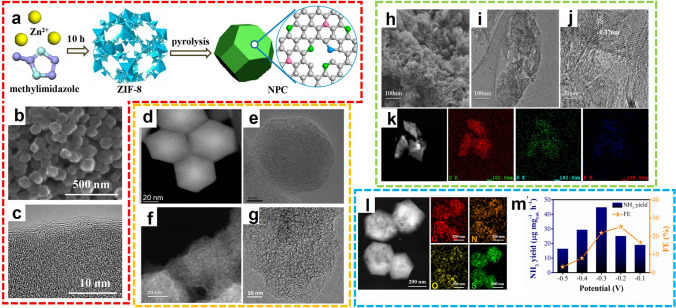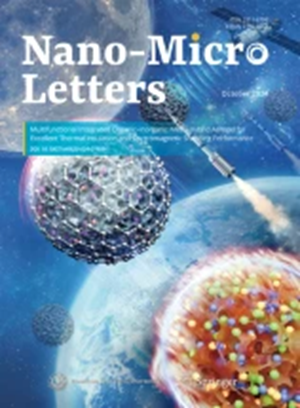电合成氨的纳米工程金属有机框架及其衍生物。
IF 36.3
1区 材料科学
Q1 MATERIALS SCIENCE, MULTIDISCIPLINARY
引用次数: 0
摘要
温和条件下的电催化合成作为工业应用的一种实用替代方法,特别是在绿色氨(NH3)工业中已变得越来越重要。设计合理的电催化剂对实现优异的催化性能起着至关重要的作用。在各种有前景的纳米材料中,金属有机框架(mof)是开发高效电催化NH3合成的有竞争力的候选材料,可以从简单的含氮分子或离子,如N2和NO3-。综述了近年来mof电催化剂在NH3电合成中的研究进展,并对其在N2还原反应(NRR)和NO3-还原反应(NO3RR)中的应用进行了分类和讨论。首先,阐述了该工艺的基本原理,包括N2和NO3-生成NH3的可能机理、相应的电催化装置、反应效率评价参数以及NH3产率的检测方法。然后,详细讨论了NRR过程的电催化剂,包括原始mof, mof杂化,mof衍生的n掺杂多孔碳,mof热解的单原子催化剂以及其他mof相关材料。随后,还列出并讨论了mof相关的NO3RR工艺。最后,提出了合理设计和制造mof电催化剂用于电化学NH3合成的挑战和前景,如人工智能研究方法的发展、mof相关催化剂合成方法的创新、表征技术的进步以及电催化反应的扩展。本文章由计算机程序翻译,如有差异,请以英文原文为准。



Nanoengineering Metal–Organic Frameworks and Derivatives for Electrosynthesis of Ammonia
Highlights
-
Recent advances in the metal–organic framework (MOF)-related catalysts for electrochemical ammonia synthesis protocols under ambient reaction conditions are summarized and discussed.
-
The design and fabrication of efficient electrocatalysts from MOF for the reduction of N2 and NO3− are systematically analyzed.
-
Based on the current advances, the ongoing challenges and promising perspectives are highlighted.
求助全文
通过发布文献求助,成功后即可免费获取论文全文。
去求助
来源期刊

Nano-Micro Letters
NANOSCIENCE & NANOTECHNOLOGY-MATERIALS SCIENCE, MULTIDISCIPLINARY
CiteScore
42.40
自引率
4.90%
发文量
715
审稿时长
13 weeks
期刊介绍:
Nano-Micro Letters is a peer-reviewed, international, interdisciplinary and open-access journal that focus on science, experiments, engineering, technologies and applications of nano- or microscale structure and system in physics, chemistry, biology, material science, pharmacy and their expanding interfaces with at least one dimension ranging from a few sub-nanometers to a few hundreds of micrometers. Especially, emphasize the bottom-up approach in the length scale from nano to micro since the key for nanotechnology to reach industrial applications is to assemble, to modify, and to control nanostructure in micro scale. The aim is to provide a publishing platform crossing the boundaries, from nano to micro, and from science to technologies.
 求助内容:
求助内容: 应助结果提醒方式:
应助结果提醒方式:


